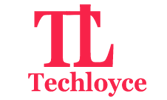Customer relationship management (CRM) is a technology that businesses use to manage their connections and interactions with current and prospective customers. CRM allows firms to strengthen customer relationships, improve procedures, and increase sales and profitability when it is optimised.
CRM systems aid firms in contract management, sales growth, and productivity by focusing on connections with individuals, suppliers, customers, and service users. The CRM lifecycle assists firms in acquiring and retaining new customers, increasing lead creation, and offering additional support and services along the customer experience.
In this article, we’ll teach you how to optimise your CRM tools for optimal business agility, as well as the advantages of appropriate CRM management.
Step 1: Setting it All Up
If you’re a growing firm, you’ve probably already implemented a CRM system as part of your Go To Market Strategy (and if not, it’s time to start). The easiest way to get started with your new CRM system is to create an implementation plan that ensures the platform is properly configured and aligned with your sales and marketing strategy.
Set quantifiable objectives. What are your top concerns? What do you consider to be an effective CRM?
Set up your CRM. Once you’ve decided what you want to get out of your CRM, ensure your data is correctly migrated or set up and mapped to other systems.
Improve your skills. Take the effort to train yourself and your team on how to use your CRM correctly. When deploying a new CRM, we believe that change management is a vital success component. Consider developing a backup plan for any potential hurdles or barriers.
So you’ve implemented your CRM; what now?
It’s time to keep optimising the platform!
Step 2: Constant Optimization & Maintenance
Developing system operations and periodically checking in on the performance and clean data management of your CRM not only allows you to fully leverage the system, but it can also assist in cutting your customer acquisition expenses and save you time.
So, where do you begin optimising your CRM? Here are our top three recommendations for making the most of your Customer Relationship Management software.
Make Certain Usability
Many businesses already have CRM systems in place, but their workers aren’t using them. Some of you may be asking, “Why wouldn’t they want to take advantage of a tool specifically made to streamline their workflow?”
It frequently comes down to things like:
- Uncertainty about the purpose or benefits of a CRM
- a lack of appropriate training
- Excessive expectations
- Adoption by users
The greatest method to avoid usability issues is to make your CRM approachable and worthy of your team’s attention.
Instill the importance of CRMs in the workflow.
Inform your sales team that CRM systems will save them time and allow them to focus on closing deals because they will keep all of their information in a centralised location.
Sales managers profit as well!
A CRM will give managers important insight into all of the company’s sales operations and highlight sales pipelines, allowing them to better estimate future income streams.
Make certain that your staff have the appropriate training and time to become accustomed to using a CRM. It is not a one-day goal to teach your employees how to use a CRM.
Instead:
Consider beginning with a pilot project. Begin with the most fundamental data input needs. Once your employees have mastered these, introduce a new feature or process. Continue to add new “levels” until all aspects of your CRM are being used in your teams’ everyday routines.
Don’t overburden your crew. DO NOT INCLUDE CRM capabilities if your firm would not profit from them. Make it easy for your staff to enter information (preferably, on the go via mobile apps) without having to enter useless data.
Show your support. Take note of any issues or worries your team may have about using CRM software. Keep your staff informed by involving them in decision-making and working together to discover answers.
Maintain Good Data Hygiene
Unclean data might begin to stink. Maybe not smell… However, inaccurate knowledge will do you no good.
If your CRM is full of spoiled data, you’re losing money as a result of mislabeled invoices, marketing assets that never reach your clients, having your emails banned as a result of sending out too many undeliverable messages, and time wasted hunting for the right client information.
So, how do you maintain track of your data? A data audit once or twice a year can guarantee that your information is relevant and that your CRM is functioning properly.
To audit your data, do the following:
- Begin by identifying sources of contamination. Is data being recorded correctly and at the right time? Is it possible to improve the way data is entered into your CRM?
- Remove any extraneous information. This can include duplicated or incorrectly entered data, bounced emails, or information that is no longer relevant to how you conduct business.
- Look for any gaps. Do you have a lot of gaps in your knowledge? Is there anything your CRM doesn’t already do that you think would be a useful addition to the system?
- Consider the utility. How would you rank the data quality? What kind of consumer information is most useful to your company?
Create or improve a standard data entry system to combat human error or other points of pollution discovered during your audit once you have cleaned up your existing data. The organisation is your friend! By creating simple rules, you’ll be able to categorise and separate information based on your company’s needs and objectives, making future audits a snap.
Final Word
CRM is a crucial tool for businesses to manage customer interactions, improve contract management, and boost productivity. Optimizing it requires proper implementation, training, and data hygiene to ensure its proper functioning.
